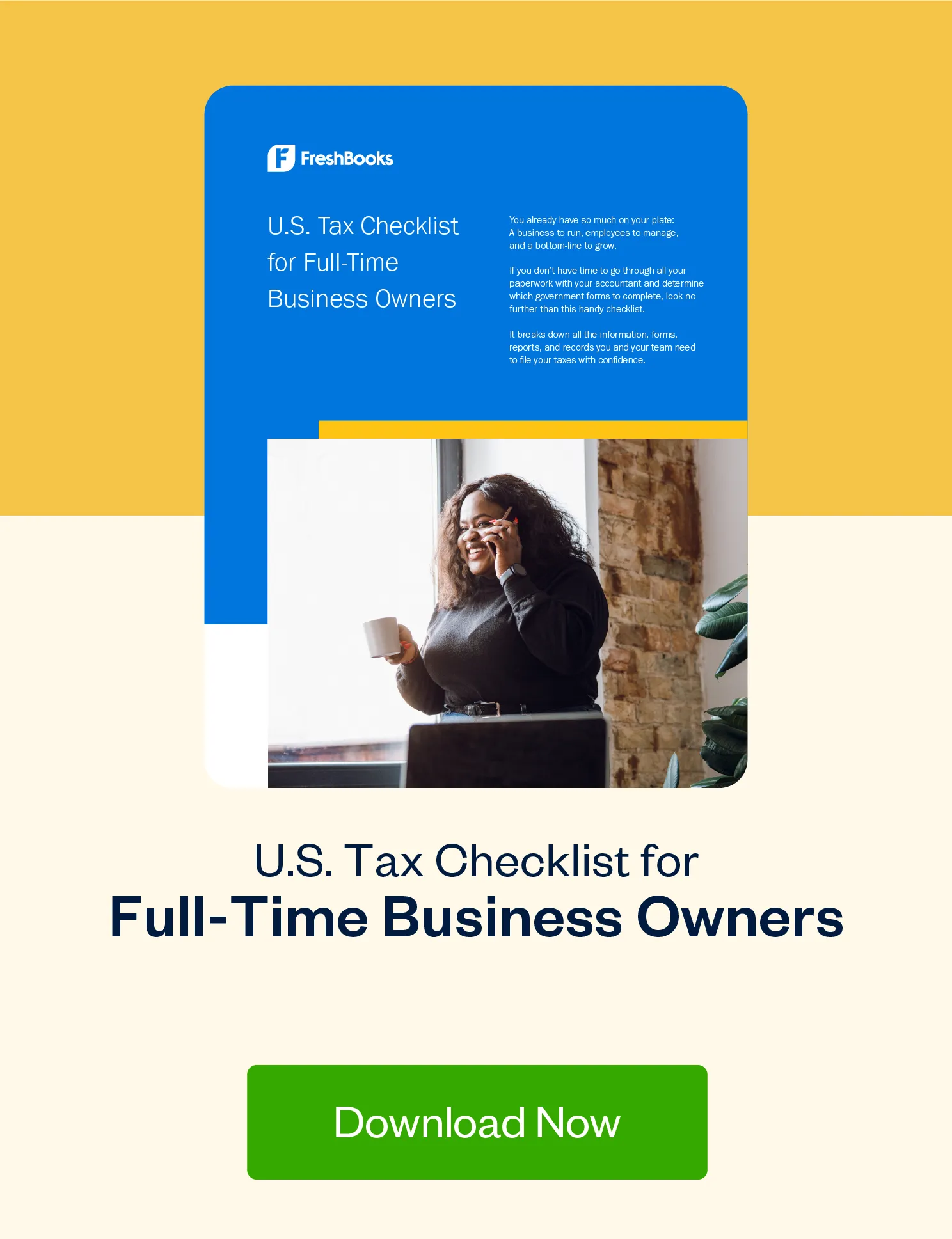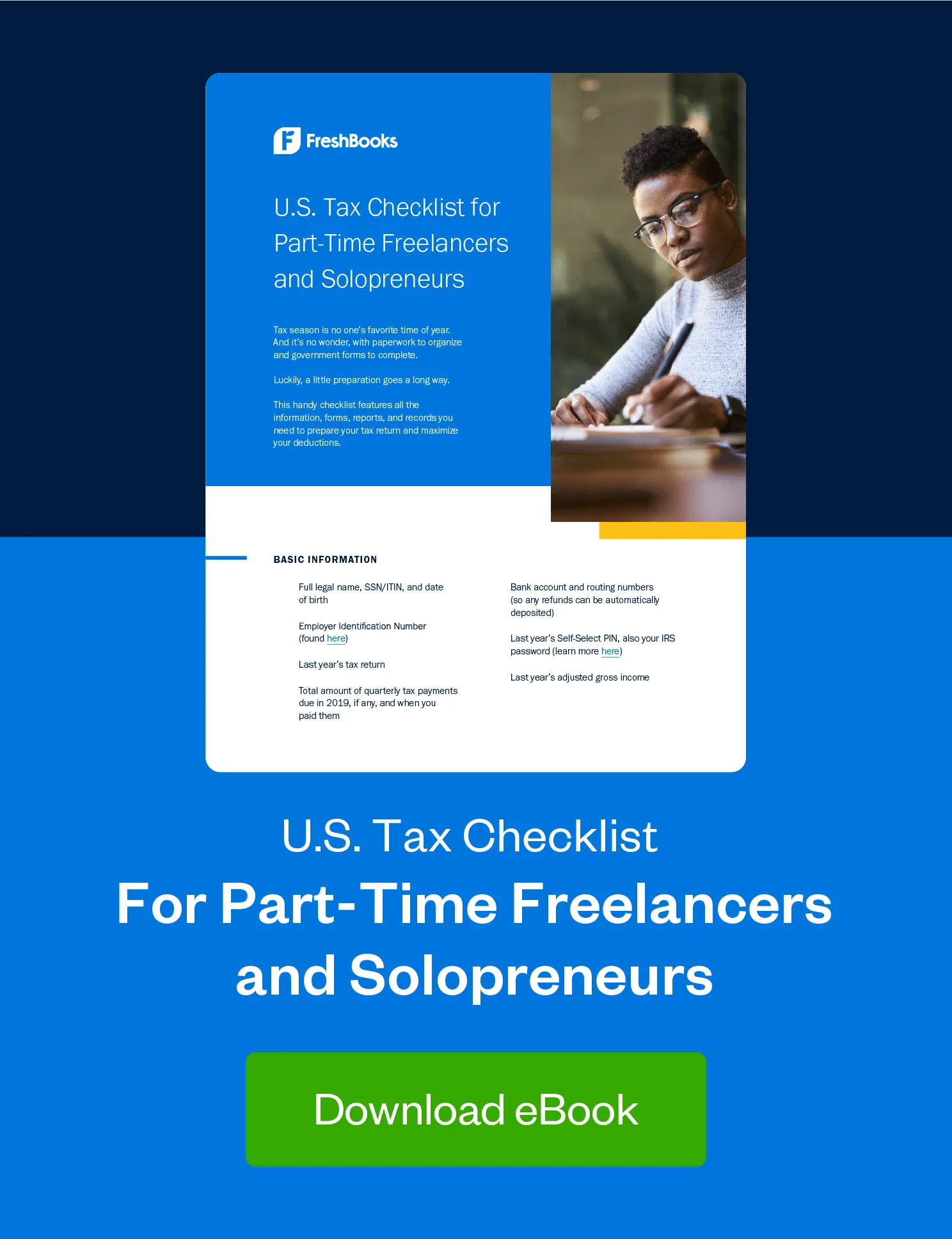If you don’t understand how to lower your self-employment taxes, you might be paying more than you need to. We’re here to make sure that doesn’t happen.

Tax season isn’t a particularly fun time for anyone—but it can be especially tough on the self-employed. Not only can the filing process feel confusing, but you’re also faced with the harsh reality of just how much of your income is going towards your self-employment taxes.
If you’re bringing in self-employment income, there’s no way around self-employment taxes. But just because you can’t avoid them entirely doesn’t mean they need to break your budget. There are strategies you can use to minimize the impact of your self-employment taxes—and to pocket more of your hard-earned income.
Let’s take a look at some of the different ways you can lower your self-employment taxes. Keep in mind that this is a general breakdown of these strategies. Before making any tax decisions, it’s always wise to speak with a tax advisor or accountant about your particular situation.
Table of Contents
What Are Self-Employment Taxes—and Who Needs to Pay Them?
Before we jump into how to lower your self-employment taxes, let’s quickly cover what, exactly, self-employment taxes are.
The self-employment tax is how self-employed individuals (i.e., sole proprietors, partners in a partnership, and some members of limited liability companies) pay their social security and Medicare payroll taxes. If this tax seems higher than what you paid as an employee, that’s because it is. Employers and employees typically split these taxes, but self-employed people are on the hook for the whole thing.
Anyone who makes more than $400 per year of self-employment income is required to pay self-employment taxes (so if you have a side hustle that’s bringing in more than $400 each year, you’re on the hook). To calculate how much you owe in self-employment taxes, you’ll need to file a Schedule SE with your tax return.
The current self-employment tax rate is 15.3%, which breaks down to 12.4% for social security and 2.9% for Medicare.
OK, now that you know what self-employment taxes are and who has to pay them, let’s jump into the strategies you can use to lower your self-employment taxes (and bank more of this year’s income in the process):
How to Lower Self-Employment Taxes:
1. Increase Your Business Expenses
It might sound counterintuitive, but spending more on your business can actually help you save money by lowering your self-employment taxes.
Your self-employment taxes are based on your net income. And because business expenses reduce your net income, they also reduce the amount you’ll owe in self-employment taxes.
Eligible business expenses include things like office equipment, education, advertising, and labor costs. Basically, if it’s money spent on keeping your business up, running, and growing, the IRS considers it a business expense.
Just make sure you’re tracking all of your expenses. If you’re claiming something as a business expense for tax purposes, you need to document it. Want to simplify the process? With FreshBooks, all you need to do is connect your business account. From there, FreshBooks will automatically track and properly categorize your expenses to help you get ahead this tax season.
2. Change Your Business Structure
The way you structure your business can impact how much you have to pay in self-employment taxes. And one of the best business structures to help reduce your self-employment taxes? An S Corporation.
When you elect to be taxed as an S Corp, you pay yourself a reasonable salary from your self-employed earnings—and have the option to distribute any additional income to yourself (and any other shareholders) or leave your money in the business.
So, how does this lower your self-employment taxes? With an S Corp, the money you pay to yourself as a salary is subject to employment taxes—but, under most circumstances, the additional income is not.
So, let’s say you make $75,000 per year. If you structure your business as an S Corp, you would pay yourself a salary from that $75,000—let’s say $50,000. As an S Corp, you would only have to pay self-employment taxes on your salary of $50,000—not on the additional $25,000 in earnings. If you structure your business as a sole proprietorship? That entire $75,000 is subject to self-employment taxes.
3. Look For Deductions
Deductions are another way to lower your taxable income—which, in turn, will reduce your self-employment taxes.
There are several deductions you can claim as a self-employed person (more from Investopedia):
- Did you take out a loan to start your business? You can claim a deduction for the interest paid on that business loan
- Do you use your car to meet clients regularly? You may qualify for a deduction based on your mileage
- Do you pay for meals while traveling for business or take clients out to lunch? You can deduct the cost of business meals
- Work from a home office? Claim the home office deduction on your taxes
The point is, there are plenty of deductions available for the self-employed—and if you want to lower your self-employment taxes, you should look for (and claim) as many deductions as possible.
4. How to Lower Self-Employment Taxes? Deduct Them
Another deduction you can claim as a self-employed person is, ironically, your self-employment taxes.
You can deduct 50% of your self-employment taxes (the employer portion) from your federally taxable income. While this technically doesn’t lower your self-employment taxes, it does reduce the total amount you’ll pay to the IRS come tax time. And really, isn’t saving money what it’s all about?
5. Take Advantage of Tax Credits
Tax deductions and tax credits often get lumped together. But if you’re not taking advantage of both, you’re missing out on a solid opportunity to lower your self-employment taxes.
What, exactly, is the difference between tax deductions and tax credits? As mentioned, tax deductions lower your taxable income. For every dollar you deduct, your taxes are cut by a percentage of that deduction, which is based on your tax bracket. So, for example, if you’re in the 15% tax bracket, your tax is cut by 15 cents for every dollar you deduct.
Tax credits, on the other hand, lower your actual tax dollar for dollar. So, if you have a tax credit of $500, that credit will actually lower your taxes by $500.
Basically, tax credits are tax deductions on steroids—and, if you’re eligible for them, they can dramatically reduce the amount you owe in taxes (including self-employment taxes).
There are a variety of tax credits available to small business owners, for example:
- The disabled access credit provides up to $5,000 in tax credits to business owners who spend money to make their businesses more accessible for people with disabilities (like installing a ramp).
- If you spent a substantial amount of money on research and development, you might be eligible for the qualified research expenses credit, which provides tax credits for things like environmental testing, developing and applying for patents, and prototype development.
- If you hire employees, consider hiring people who’ve traditionally faced barriers to employment, as you may be able to claim the Work Opportunity Tax Credit. This credit is for companies that hire veterans, ex-felons, Supplemental Nutrition Assistance Program (SNAP) recipients, and long-term unemployment recipients. For each person from a targeted category you hire, you can claim a credit of up to $9,600.
Not every available tax credit will be relevant to you and your business—but the potential for significant savings makes tax credits a strategy worth investigating.
6. Invest in Eligible Retirement Accounts…
There are a million reasons why investing in your retirement is a good idea (the least of which is, you know, having money to retire with). But if you need an added incentive to start stashing cash away, contributions to eligible investment accounts are tax-deductible. They won’t reduce self-employment taxes, but they do reduce your federal income taxes.
Investment accounts for self-employed individuals that are eligible for pre-tax contributions include:
- Traditional IRAs
- Simplified Employee Pension (SEP) IRAs
- Individual 401ks
Keep in mind that there’s no one-size-fits-all solution to retirement planning. The type of account (or accounts) that are going to make the most sense for you depend on your investment goals, savings strategy, and how much you plan to contribute each year.
Talk to a qualified financial advisor if you’re not sure how to best plan (and save) for your retirement.
7. …or an Hsa
In addition to retirement accounts, there’s one other kind of account that can help lower your taxable income—and that’s a Health Savings Account (HSA).
If you’re enrolled in a high-deductible health plan (or HDHP, which is defined as any plan with a deductible of at least $1,400 for an individual or $2,800 for a family, and an out-of-pocket maximum of no more than $7,050 for an individual or $14,100 for a family), you may qualify for an HSA.
With an HSA, you can deposit pre-tax dollars into your account to cover qualified medical expenses, including deductibles, coinsurance, and copayments (for 2022, the yearly contribution limits for HSAs are $3,650 for individuals and $7,300 for families).
Because contributions aren’t taxable, the money you put into your HSA will lower your taxable income. HSAs also roll over from year-to-year, so you can carry those tax-free savings to pay for future medical expenses.
If you’re not sure if you qualify, talk to your insurance company to determine if your plan is considered an HSA-eligible HDHP.
Get out There and Lower Your Self-Employment Taxes
Taxes—and, in particular, self-employment taxes—are a tricky beast.
The whole scenario is a double-edged sword: The more money you make as a self-employed person, the more you’ll pay in self-employment taxes, and the less you’ll have in your bank account.
But now that you know the best strategies to reduce your self-employment tax costs, you have everything you need to slash your self-employment taxes (and keep more of your profits in your pocket in the process).
This post was updated in December 2022.

Written by Deanna deBara, Freelance Contributor
Posted on February 22, 2021
This article was verified by Janet Berry-Johnson, CPA and Freelance Contributor

 7 Tax Terms U.S. Entrepreneurs Should Know
7 Tax Terms U.S. Entrepreneurs Should Know Creatives: 6 Commonly Missed U.S. Tax Deductions
Creatives: 6 Commonly Missed U.S. Tax Deductions A U.S. Freelancer’s Handy Guide to Quarterly Taxes
A U.S. Freelancer’s Handy Guide to Quarterly Taxes





